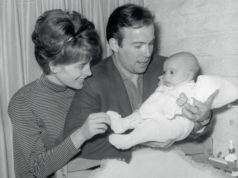In early 1999, Gwyneth Paltrow was the hottest commodity in Hollywood. When the blond ingénue won the Academy Award for Best Actress for her performance in…
In early 1999, Gwyneth Paltrow was the hottest commodity in Hollywood. When the blond ingénue won the Academy Award for Best Actress for her performance in “Shakespeare in Love,” she propelled her status even higher — and took her friend, the Los Angeles-based jeweler Cathy Waterman, with her.
“It had a strong impact on my business,” Waterman says of that night. Paltrow had plucked a delicate mesh floral bracelet, made of diamonds and sapphires, from her own personal collection to wear on the red carpet.
At the time, relationships between actresses and jewelers were casual and intimate.
“An actress would reach out to me directly and ask to borrow a piece for an event. Because I had an unlisted number [and no storefront], it was usually someone that I already had a relationship with,” she says, noting that with the “warm and charming” Paltrow, “I remember asking her at one point if she baby-sat.”
Today, the world’s best jewelers all take it for granted that draping an A-list actress in diamonds is essential for an event such as the Oscars. As glamorous and romantic as it can be, the Academy Awards red carpet is also a marketing platform — the crescendo of a slick symphony performed by power publicists, superstylists and hard-nosed studio executives, all determined to make their stars stand out from the crowd.
Stephanie Tricola, a stylist who has worked with A-listers including Margot Robbie and Saoirse Ronan, says that brokering the connection between an actress and her red carpet jewels can start a full month before the big day. Tricola says she begins by sending e-mails to the jewelers, and then makes appointments to browse the world’s most fantastic — and expensive — gems.
“It’s almost like a dream,” Tricola, who has borrowed from the likes of Harry Winston and Chanel for her clients, tells The Post. “It’s like going into a store and being able to pick whatever you want without being concerned with how much it costs.”
The Cinderella fantasy ends there. Tricola says she leaves the salon empty-handed, and awaits the arrival of her dazzling selections, which usually come with their own VIP escort: “A bodyguard will come with the jewelry and stay with the jewelry.”
But not always. In cases of cross-country travel, sometimes “it comes FedEx,” she says. (This is not totally unprecedented: Harry Winston infamously sent the Hope Diamond to the Smithsonian Institution via the US Postal Service in 1958.)
Either way, taking custody of a jewel that costs more than a small house can be “stressful.” As soon as the bling arrives — chaperoned or not — she triple-checks it against the inventory list that comes with it. Although the jewelers have insurance, the stylists do, too. Tricola says the stylist, not the movie star who might absentmindedly let a clasp slip, absorbs the risk: “Once I have a piece out on loan, it’s my responsibility.”
The first time a movie star borrowed jewels for the Oscars was back in 1944, when Harry Winston lent actress Jennifer Jones a diamond necklace at the behest of producer David O. Selznick. The stunt misfired: Jones opted for a high-collared, ruffle-necked dress that covered the bling.
The idea of a memorable Oscar “jewelry moment” — such as Lupita Nyong’o’s much-tweeted about Fred Leighton tiara from 2014 — was still decades away.
Jewelry historian Marion Fasel cites the 1970 awards as one of the turning points: Legendary diamond collector Elizabeth Taylor arrived at the show wearing a low-cut periwinkle gown that matched her eyes — and her very own 69.42-carat stone around her neck. She and husband Richard Burton had recently bought at it a highly publicized public auction for over a million dollars.
“At the time it was the most expensive diamond in the world,” says Fasel, who ran InStyle’s jewelry coverage for nearly 19 years. “People see that image and think that there must be more moments like that in jewelry history, but there really aren’t,” partly because the pricy jewels were Taylor’s own.
Going forward through the 1980s, extraordinary jewels at awards shows were still few and far between. Stars wore their own, more modest pieces, or even costume jewelry. And if they borrowed, it was usually because “there was a personal relationship [with the jeweler],” Fasel explains.
“Before [the ’90s], lending was really reserved for editorial purposes,” Rebecca Selva, Fred Leighton’s chief creative officer and p.r. director, tells The Post. The benefits of supplying jewels for glossy photo shoots were obvious, as the brand’s name would appear in the pages of top magazines. But at that time, no one was asking Oscar nominees about their outfits on the red carpet. The publicity opportunities were indirect, at best.
Comedienne Joan Rivers helped change all that in 1994, when she created a show for the burgeoning E! network, called “Live From the Red Carpet,” in which Rivers, a jewelry lover, asked questions about the pieces the actresses wore.
Loan requests to fabled jewelry houses soon followed. Selva recalls Miuccia Prada, the grande dame of Italian fashion, calling her ahead of the ’96 show. Prada was dressing Nicole Kidman, then the striking wife of Tom Cruise. Did Fred Leighton have anything they’d be willing to share?
The brand agreed to lend a multistrand opal choker necklace. “We were so new to this, we didn’t even send out a press release [when Kidman wore it],” Selva says.
Soon, however, the brand — and many others — learned how to turn the red carpet to its advantage. And it was not only the jewelers: the actresses did, too — stars such as Anne Hathaway and Paltrow are reportedly paid in the high-six-figures just to don the dazzling gems.
“These women, they know their power,” says Fasel.
The era of calculated couture had officially arrived.
“It’s more businesslike now,” Waterman admits. “I’m almost signing an NDA when [the stylist] is putting together a look.”
But even with new hoops for jewelers to jump through, Fasel says that it’s worth it, without a doubt, to get a gorgeous piece on the red carpet.






